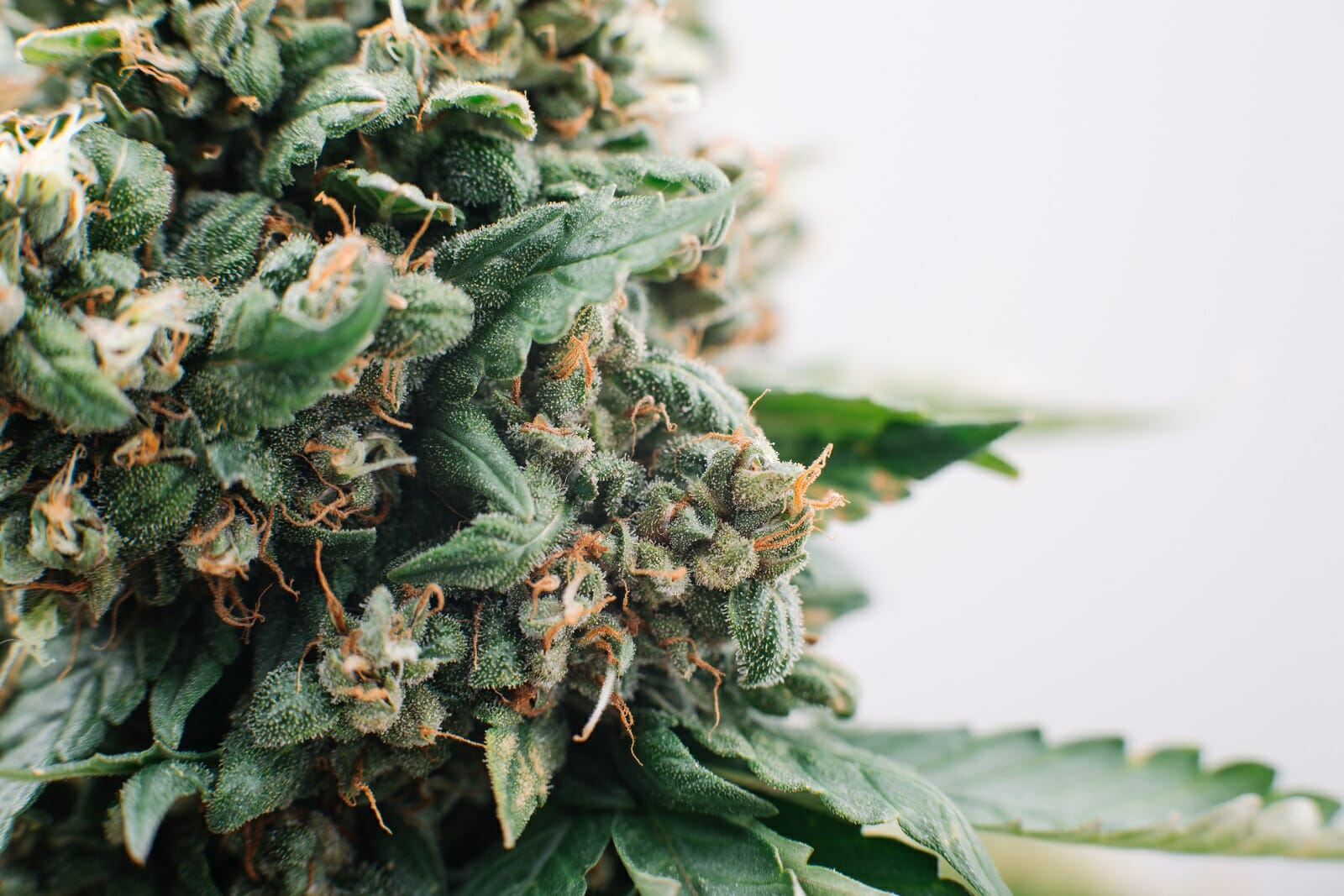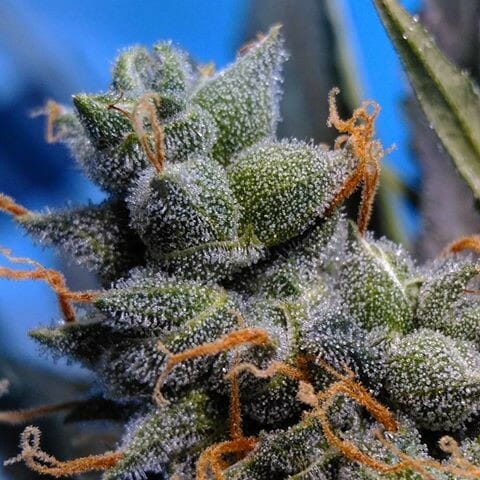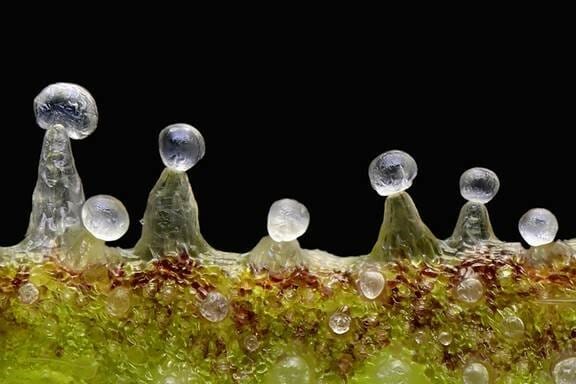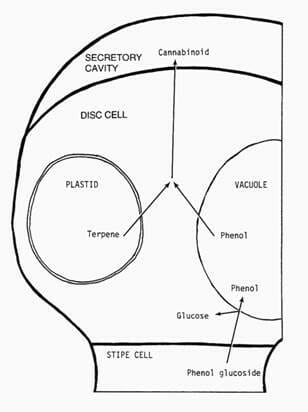Terpenoids, Trichomes & Cannabinoids
Part 1: Where they are located

Written by Mike Steffes – Quest Dehumidifiers
THC and other cannabinoids are produced in only one place on the cannabis plant: Inside the heads of trichomes.
Two types of organelles (tiny organs) in the plant cells at the base of the trichome’s head work to combine their products. The first organelles, called vacuoles, contain phenols, a chemical compound similar to alcohol. The second type of organelles, plastids, produce terpenes. The two chemicals meet inside an expanding secretory cavity at the top of the trichome where they form into a fibrous mat. This concentrated mat absorbs UV-B light waves, which activate the reactions driving the creation of cannabinoids.

Trichomes on cluster of flower bracts at harvest stage.
Cannabinoids are most abundant in the capitate-stalked glands. During flowering, many capitate glands assume this form. The formerly low profile capitate (button like) glands extend themselves. The glands grow to a height of 6 to 20 thousandths of an inch as their stalks elongate. Capitate-stalked glands appear at the start of flowering and form their densest cover on the female flower bracts (specialized leaves that cover the seeds). They are also highly concentrated on the small leaves that accompany the flowers.

Capitate-stalked trichomes w/ full secretory cavities

Schematic of cannabinoid synthesis in the trichome
The vast majority of THC is found on structural components within the secretory cavity, particularly the wall, fibrous matrix, and surface features of vesicles. This suggests THC may be chemically bound to these structural components rather than being free in the cavity.
